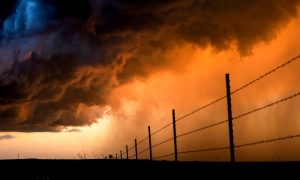Mitigating severe weather risks: Essential questions for lenders in the ag industry

The truest fact you can say about agriculture is our very existence is dependent on reliable weather patterns. But in recent years, shifts in these patterns are introducing new considerations for lenders in the ag space.
Researchers noted that while U.S. agriculture is increasingly productive in recent decades, producers are experiencing “greater variability in crop yields and associated farm income,”1 which is, in part, related to an increase in severe weather events.
While numerous other factors influence crop yields and farm income, including market prices, legislation and economic conditions, severe weather events are increasingly influential in assessing a farmer’s exposure to risks. Being cognizant and aware of these risks can enable you, as a lender, to make informed decisions about loan terms, repayment schedules and potential risk mitigation strategies.
Another billion dollar year: A look back on 2022’s severe weather
The year 2022 was noteworthy for the multitude of severe weather conditions that devastated crop producers across the U.S. — from Florida hurricanes, to the derechos and hailstorms in the Midwest, to flooding in eastern Kentucky and Missouri. These resulted in over $1 billion in crop damage.
The biggest weather story of 2022 was drought. As 40% of the U.S. endured its fourth year of scant rain, the effects on agriculture were far reaching, racking up $20 billion worth of crop losses to parched land and wildfires.2
- Texas: Texas faced the most severe weather damage in 2022, with crop losses totaling $6.4 billion. This included $2.9 billion in damaged cotton crops, $1.7 billion in rangeland damage, and $1 billion in wheat damage. Exceptional drought conditions, along with hailstorms and severe weather, caused significant devastation.
- California: In 2022, acreage of irrigated farmland dropped 10%, while crop revenues fell by $1.7 billion.3
- Beef: Ongoing drought conditions forced producers to slaughter 13.5% of the U.S. beef herd, tightening beef supplies and raising prices over the next three years as producers restore their herds.
But 2022 doesn’t stand alone as a significantly devastating year. Natural disaster events costing an excess of $1 billion (adjusted for CPI) are becoming more frequent, as the following historic severe weather averages compiled by NOAA4 demonstrate:
- Annual natural disaster events causing $1 billion in damage averaged between 1980-2022: 7.9
- Five-year average 2018-2022: 17.8
Any increase in natural disasters, whether it’s flooding, hurricanes, heat waves, freezes or wild-fires, will impact producers in the $300 billion agriculture industry each year, touching food supplies and farm income. In 2022, 341 weather and climate disasters were recorded across the U.S. with ag losses amounting to 7.7% of the economic impact.
Mitigating the risk of severe weather: Questions lenders should ask borrowers
As weather events intensify, much is at stake. The public is counting on a safe, abundant and affordable food supply. For producers, considering their exposure to risk will be essential to their ability to thrive through the challenges, and that’s where you the lender can help them arrive at cost-effective solutions. To begin this process, these are some of the questions to ask farmers and ranchers during the lending process.
Risk factors: The weather and your borrower
- Is the producer’s operation susceptible to potentially devastating weather conditions and natural disasters?
- How has severe weather impacted the region in recent years?
- Did it affect the producer’s crops, livestock and operations?
- Historically, how has the borrower’s operation performed following a severe weather event?
- What did they do to maintain profitability or recover from the losses?
- What’s the long-term outlook for the region, how might that affect the borrower’s farming and income potential?
Risk mitigation: Insurance, farming practices and technologies
- What’s the borrower’s insurance coverage for weather-related risk?
- How recently have they reviewed their policies and adjusted them to reflect the full reality?
- Have they taken full advantage of programs or are there any gaps in coverage that should be addressed?
- Which farming practices has the borrower adopted to address weather-related risks in your region?
- If new practices are under consideration, are there programs and funding that provide technical assistance along with other support?
- Is the farmer optimizing productivity through other solutions, such as precision ag hardware for managing crops and livestock?
Severe weather has always been a risk factor in the business of agriculture. The key to overcoming these challenges requires a combination approach that ensures adequate insurance protection and best practices in farming.
As a lender, it’s also paramount to offer competitive lending products that cater to the farmer’s cash flow needs to thrive in the new realities of severe weather events. Participation lending options from Agri-Access are part of the solution. As a secondary lender, we enable you to provide borrowers with access to the terms tailored to their needs, while mitigating some of the risk for your lending organization.
Read about our participation lending program and connect with us today to learn more.
Sources
- University of Nebraska, Lincoln | The Impact of Extreme Weather Events on Agriculture in the United States
- Farm Bureau | New Estimates Reveal Major 2022 Weather Disasters Caused Over $21 Billion in Crop Losses
- Los Angeles Times | ‘It’s a disaster.’ Drought dramatically shrinking California farmland, costing $1.7 billion
- NOAA | 2022 U.S. billion-dollar weather and climate disasters in historical context
